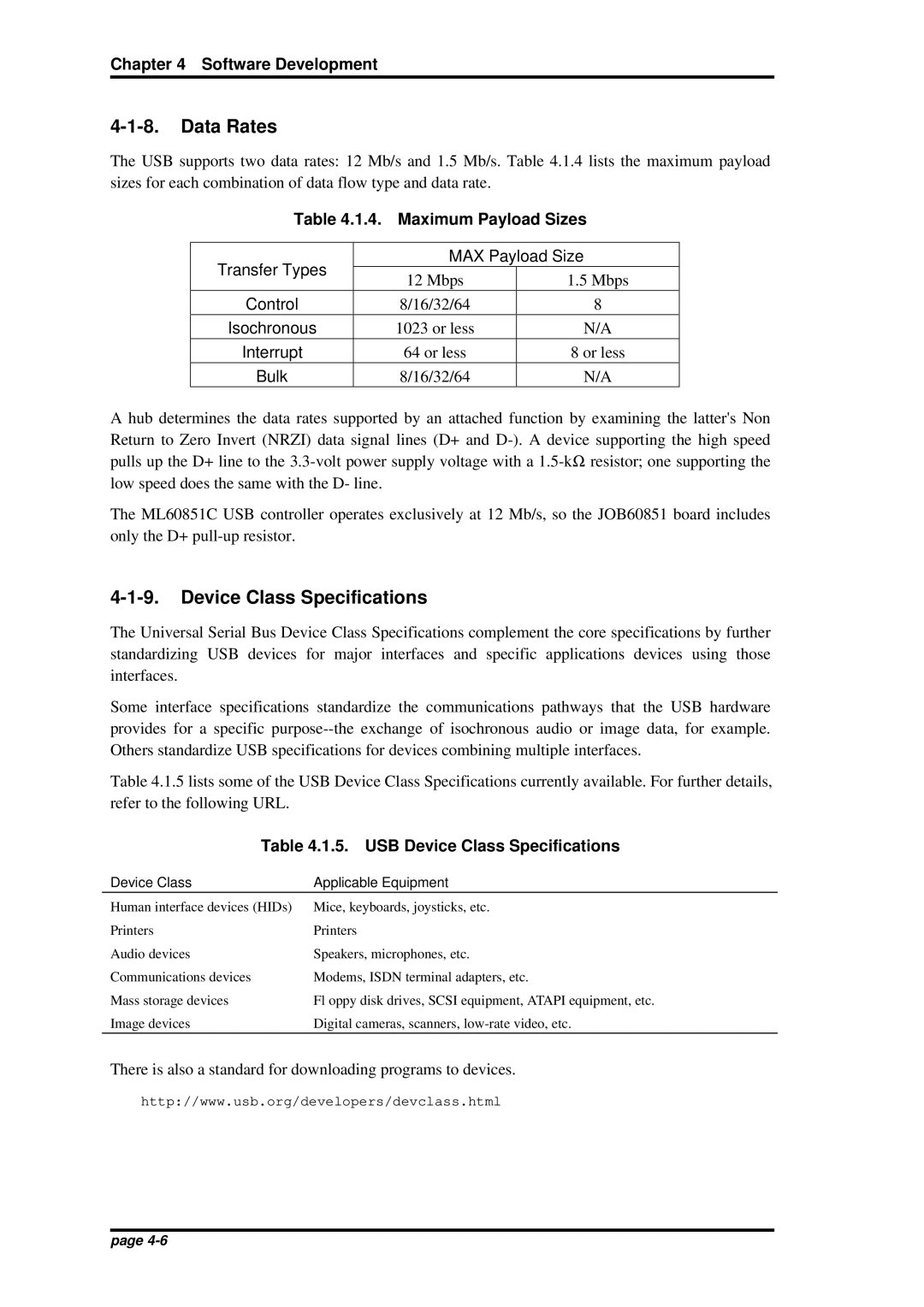
Chapter 4 Software Development
4-1-8. Data Rates
The USB supports two data rates: 12 Mb/s and 1.5 Mb/s. Table 4.1.4 lists the maximum payload sizes for each combination of data flow type and data rate.
Table 4.1.4. Maximum Payload Sizes
Transfer Types | MAX Payload Size | ||
12 Mbps | 1.5 Mbps | ||
| |||
Control | 8/16/32/64 | 8 | |
Isochronous | 1023 or less | N/A | |
Interrupt | 64 or less | 8 or less | |
Bulk | 8/16/32/64 | N/A | |
A hub determines the data rates supported by an attached function by examining the latter's Non Return to Zero Invert (NRZI) data signal lines (D+ and
The ML60851C USB controller operates exclusively at 12 Mb/s, so the JOB60851 board includes only the D+
4-1-9. Device Class Specifications
The Universal Serial Bus Device Class Specifications complement the core specifications by further standardizing USB devices for major interfaces and specific applications devices using those interfaces.
Some interface specifications standardize the communications pathways that the USB hardware provides for a specific
Table 4.1.5 lists some of the USB Device Class Specifications currently available. For further details, refer to the following URL.
Table 4.1.5. USB Device Class Specifications
Device Class | Applicable Equipment |
Human interface devices (HIDs) | Mice, keyboards, joysticks, etc. |
Printers | Printers |
Audio devices | Speakers, microphones, etc. |
Communications devices | Modems, ISDN terminal adapters, etc. |
Mass storage devices | Fl oppy disk drives, SCSI equipment, ATAPI equipment, etc. |
Image devices | Digital cameras, scanners, |
There is also a standard for downloading programs to devices.
http://www.usb.org/developers/devclass.html
page
